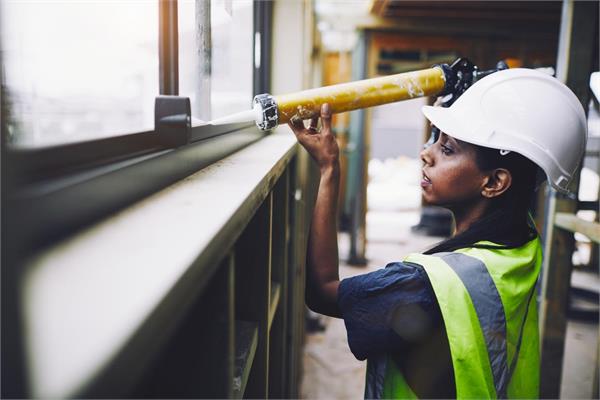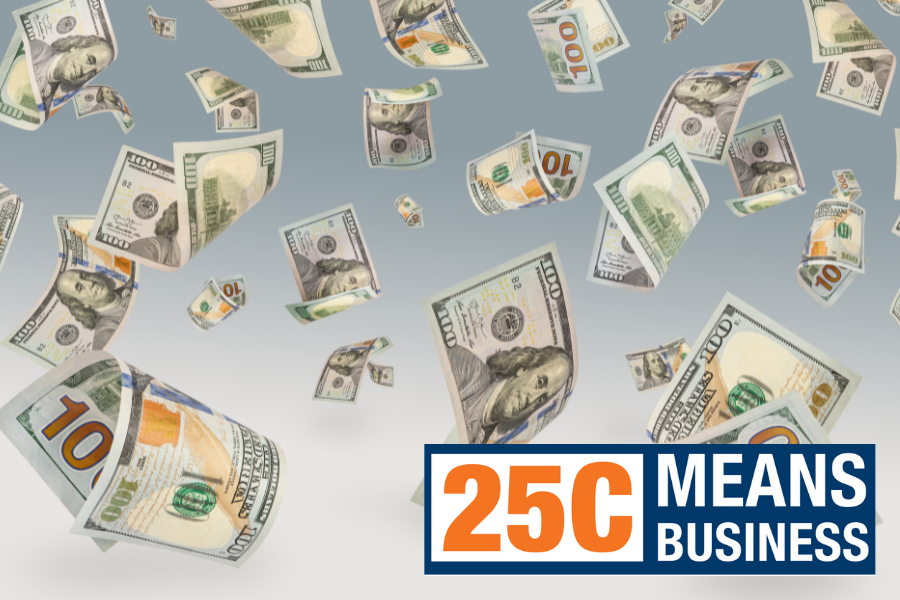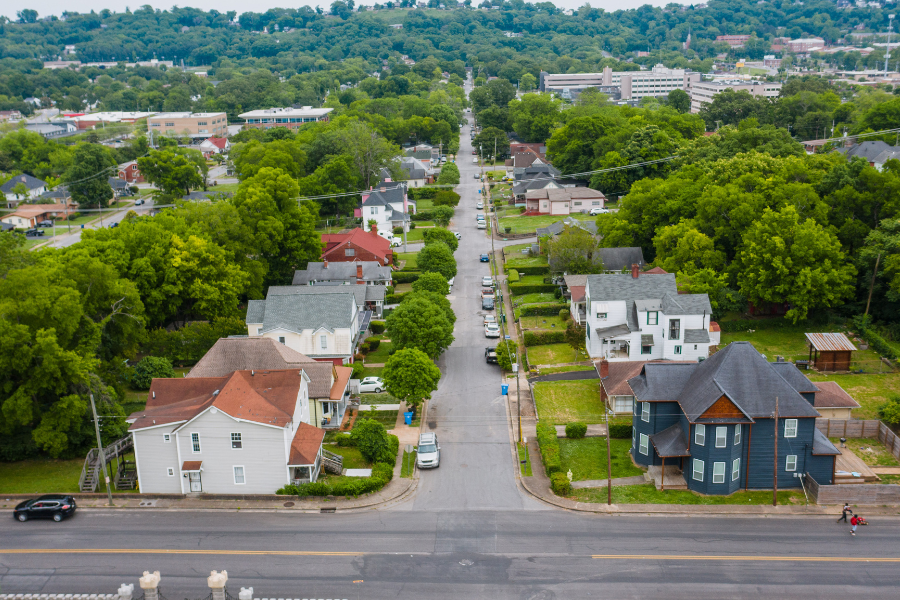Feb 7, 2021
How Our Industry Can Help Scale Up Equitable Energy Efficiency
Lara Ettenson shares her thoughts about equity in the workforce
By: Lara Ettenson

The pandemic has starkly illuminated the racial, economic, and health inequities that Black, Latino, and other people of color experience. The highest numbers of unemployment claims are from people of color and COVID-19 is a greater threat to communities that live closer to pollution, reside in unhealthy housing that contributes to pre-existing health conditions, and lack access to quality healthcare. Fortunately, energy-saving programs—such as weatherizing homes and installing highly efficient appliances—can help make buildings healthier and more affordable while getting efficiency workers back on the job when it is safe to do so.
Because people of color are also the hardest hit by climate-related disasters, we must ensure all communities have access to carbon-free options like energy efficiency to cut the pollution necessary to combat the climate crisis. Unfortunately, energy efficiency policies and programs often intersect with disparities in broader inequitable systems, such as housing, energy, and employment.
For example, there is often historic underinvestment in programs to help low- and moderate-income customers cut energy waste, especially in the affordable multifamily sector in under-resourced communities. In addition, programs do not often address tenant protections, which can lead to unaffordable rents once property values increase due to efficiency upgrades, and Black and Latino people continue to be underrepresented in efficiency jobs.
These social systems were built on policies that disproportionately affect under-resourced people and communities of color and therefore require specific program designs to counteract such long-term inequalities. This doesn’t mean abandoning programs that serve more affluent customers. In fact, it is the people who are the wealthiest that are using the most energy and require substantial changes to cut their contribution of climate pollution caused by high energy use. Rather, by using a racial and economic equity lens as efficiency program decisions are being made, the energy efficiency industry—alongside advocates and decision-makers (like local, state, and federal government policymakers as well as regulatory commissions)—can help prioritize serving the communities that are most in need.
Efficiency providers can design holistic programs with input from the community so that the efficiency offerings meet the needs of the intended recipients. Also, they can advocate for adequate funding to make sure there is enough money to provide services for everyone who needs. This would include money to implement health, comfort, and safety upgrades along with deep energy savings so customers can experience a healthier and more affordable living environment.
Energy Efficiency’s Many Benefits

If designed, implemented, and well-funded, energy efficiency programs and policies have the potential to help alleviate some of the most pervasive challenges facing communities of color and people experiencing poverty. For example, the building performance industry is key to ensuring that buildings are operating as efficiently as possible, which reduces the cost to run the building (whether multifamily or single- family) and requires a skilled workforce that could be sourced from Black, Latino, and lower-income communities. In addition:
- Efficiency saves money because using less energy to meet our needs is cheaper than relying on fossil fuel to keep our heat and lights on. This also will save building owners money, allowing for more investment in maintenance or renovations. Highly efficient buildings and appliances can also cut energy costs for tenants who pay their own bills, which reduces the percentage of household income spent on energy (energy burden) and lowers the risk of utility service shut-offs. This is critical as one in five U.S. households forego necessities like food and medicine to pay their energy bills.
- Efficiency avoids pollution and improves healthbecause when people use less energy, power plants run less. This reduces pollution from fossil fuel energy generation responsible for unhealthy outdoor air that disproportionately affects communities of color and seeps indoors due to poorly weatherized homes. Avoiding pollution improves health, which reduces medical bills and missed work or school days. Efficiency also helps people stay cooler in their homes during heat waves, especially important for elderly and medically vulnerable people.
- Efficiency fights the climate crisisby preventing the pollution that leads to climate change and contributes to public health emergencies. This reduces the risk of climate-related disasters (like super storms) that have an outsized impact on low-income people and communities of color.
- Efficiency gets people to workwith jobs like installing insulation, improving building operations, or manufacturing efficient appliances, such as the 2.3 million U.S. efficiency jobs seen in 2019.
How to Support Diverse Small Businesses and Diversify the Workforce
The pandemic has led to extensive job losses, most acutely felt by Blacks and Latinos, including almost 400,000 lost efficiency jobs through June alone. In addition, economic downturns tend to hit smaller operations or hourly-wage workers harder, which are already the least economically resilient groups.
As work begins to resume, there are a variety of ways to build a diverse workforce across all aspects of energy efficiency, including weatherization workers, energy auditors, building managers, indoor air quality specialists, and lighting systems experts. Voluntary efforts by companies and non-profits include advertising for jobs only through local community job boards, employment agencies, or through partnerships with local community groups. This can build a pipeline to high-quality efficiency jobs, such as those that provide family-sustaining wages, benefits, a career path, and a safe work environment.
Decision-makers and advocates should also take actions to support diverse businesses and help workers get prepared to safely return to work, such as:
- Incentivizing utilities to increase efficiency contracting opportunities with smaller, diverse companies or establishing required diverse supplier policies. Providing additional support, such as creating programs that directly help smaller enterprises navigate the complicated solicitation processes, to increase opportunities for these businesses and nonprofits to compete against large companies for efficiency contracts.
- Establishing minimum workforce standards so workers can be assured high-quality jobs as well as employee standards that ensure efficiency workers will have a minimum level of training, licensing, or expertise. To further advance equity, training efforts must be accessible to all, include robust stipends for participation, lead to industry-recognized certifications, and provide pathways to quality jobs—especially including in underserved communities of color.
- Linking programs that serve under-resourced communities to workers who live in them. When efficiency non-profits or companies propose and implement efficiency programs that serve Black and Latino communities, they should include a plan to hire a percentage of the workforce from the community where they plan to operate. This ensures local residents benefit not only from the building upgrades, but also from new employment opportunities that will provide more money to spend on local goods and services, which benefits the local economy. This can also build trust within the community because it will be served by people who better understand their situation and needs.
- Getting people safely back to work by setting safety protocols; ensuring a right of recall to guarantee that employers re-hiring after the crisis first recall their laid-off workers; and utilizing targeted hiring by location or population to counter underlying barriers to workforce entry.
These efforts also must address the broader barriers to employment that Black, Latino, and people experiencing poverty face, such as lack of work experience, speaking English as a second language, lack of access to affordable or reliable transportation, and childcare needs. Workforce training programs or entry-level jobs could include solutions to these challenges such as including a pathway for new workers to learn time management or professional communication skills, supporting workers who are learning English by having someone who speaks the same language as a partner on the job, providing options for carpooling to enable reliable and affordable transportation, and partnering with local community groups who might be able to support childcare needs.
Ways the Industry can Support Equitable Efficiency Program Design
While there has been great progress in finding ways to serve underserved customers, there is still much to do. Efficiency program funding continues to be insufficient to meet the need; regulatory decision-making processes do not often include input from smaller, racially diverse organizations; and programs are not always designed with necessary tenant protections in place (like limitations on rent increases or ensuring clear justification for eviction). There are many steps that the efficiency industry, advocates, and decision-makers can take to help evolve efficiency policies and programs to better serve all customers and grow job opportunities.
To ensure successful programs, design efforts must include inclusive community practices, such as engaging local representatives early in the development process and holding public meetings in or near the community. This allows smaller and more diverse community-led organizations to participate in the decision-making processes around policies that influence program design (such as how we assign the costs and benefits of measures to justify funding) and ensure the efficiency programs meet the needs of the intended beneficiaries so people will be more likely to participate.
Ensuring sufficient funding for holistic programs is critical as many efficiency programs lack enough money to reach all customers, especially for programs that offer deep energy savings as well as critical health, comfort, and safety measures. Efficiency program budgets should be reflective of the community’s relative need due to historic lack of investment that led to inefficient buildings in poor repair. The budgets should be large enough to reach all eligible people, especially those most at financial risk of utility shutoffs and eviction.
Designing an efficiency program is also an opportune time to establish co-funded programs, such as partnering with health providers to design programs that capture both energy and non-energy benefits, such as improving the health and comfort of residents. Additionally, it is critical to combine building upgrades with programs that help pay energy bills to address both short-term financial needs while investing in longer-term bill solutions through efficiency upgrades that will reduce energy costs.
Programs should also target communities that need efficiency upgrades the most such as people living in low-income neighborhoods or in high-pollution areas who often pay more for their energy and are more exposed to unhealthy air that seeps into their homes. These programs should pay for a greater portion (or the full cost) of an appliance or efficiency product (like windows or insulation) and design marketing, outreach, and education to best engage the intended communities while leveraging other programs, such as food assistance, to reach more people. Programs should also deliver efficiency offerings through partnerships, such as with organizations that offer other assistance like providing basic home repairs or in-home health care services.
All programs should only use healthy building materials to keep installers and residents safe, especially in communities with greater risk of respiratory ailments that could be exacerbated by the materials. This includes making sure that heating and ventilation efficiency work includes high-quality air filtration systems, especially near pollution sources (e.g., industrial throughways or refineries) as air quality is worse in impacted communities and can increase susceptibility to respiratory ailments.
There also needs to be transparent data to assess progress toward achieving all of the previous recommendations, such as identifying metrics to tell how well the program is being implemented. This includes measuring the number of households treated, energy saved, location of participation (including income and race demographics), as well as how many customers served have a particularly high energy burden or are at higher risk of disconnection. These data points will help ensure the intended audience is being served or would provide critical information to improve program design or delivery.
An Opportune Time to Make a Shift
We are in unprecedented times, where racial justice, economic equality, public health, and climate action have come to the fore, showing just how intertwined they are. America has an obligation to collectively create the new reality we want, by addressing these social challenges together. The efficiency sector has the opportunity to explore the best way to shift how programs are designed and what advocacy is needed to scale up the delivery of programs and deepen the energy savings and related benefits for those who need it the most while creating more job opportunities for the efficiency industry. Thankfully, we have a number of models to build from. By collaborating with advocacy groups from communities most affected by racism to design policies and programs that counteract existing disparities, we can help advance equity while ensuring access to clean air, affordable clean energy, a healthy living environment, and a thriving economy.





